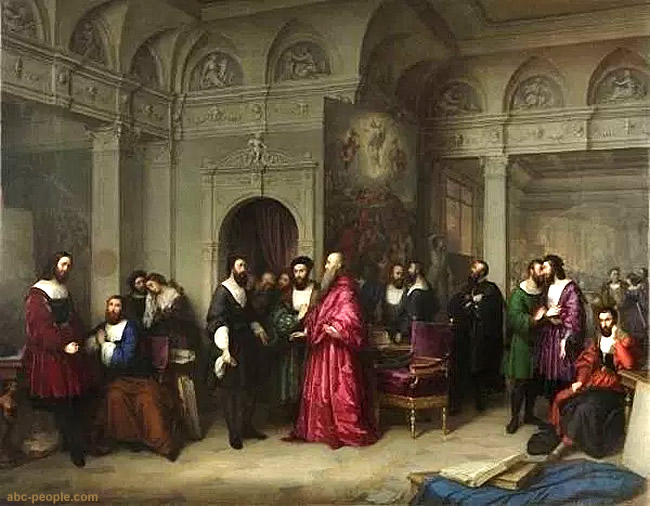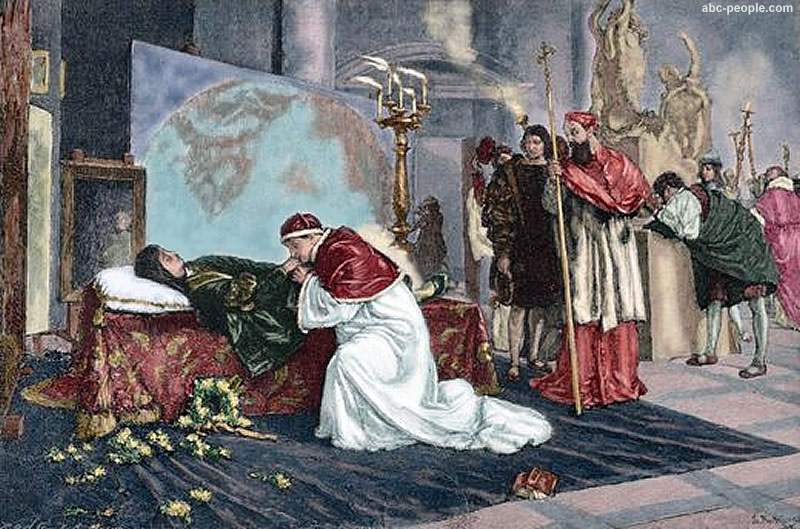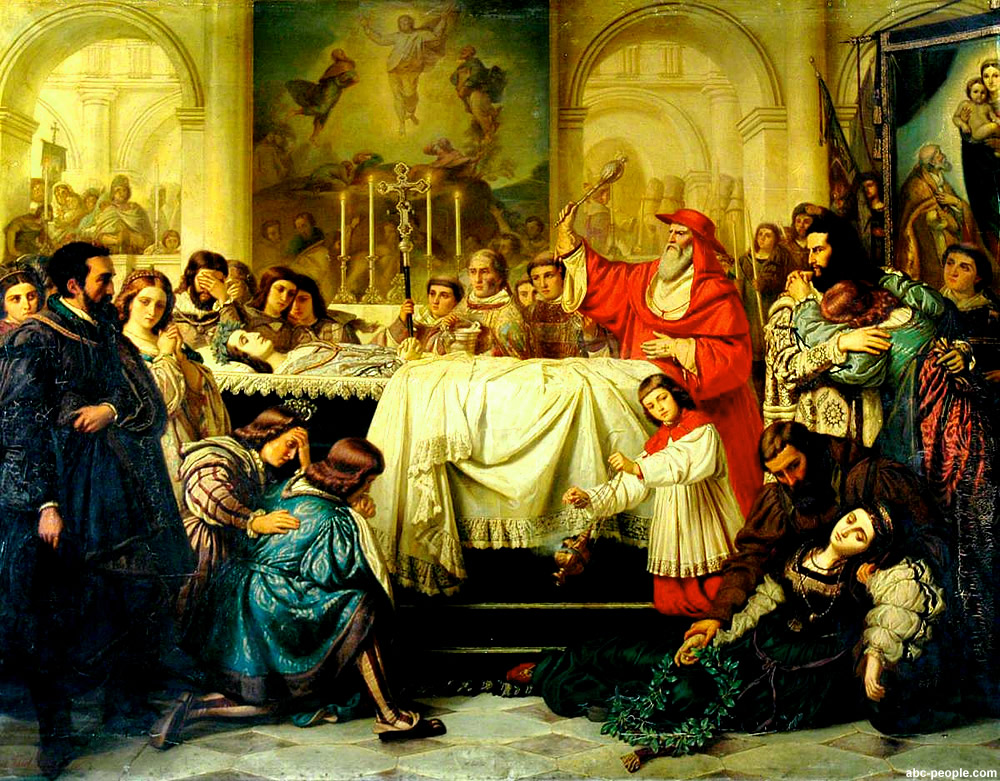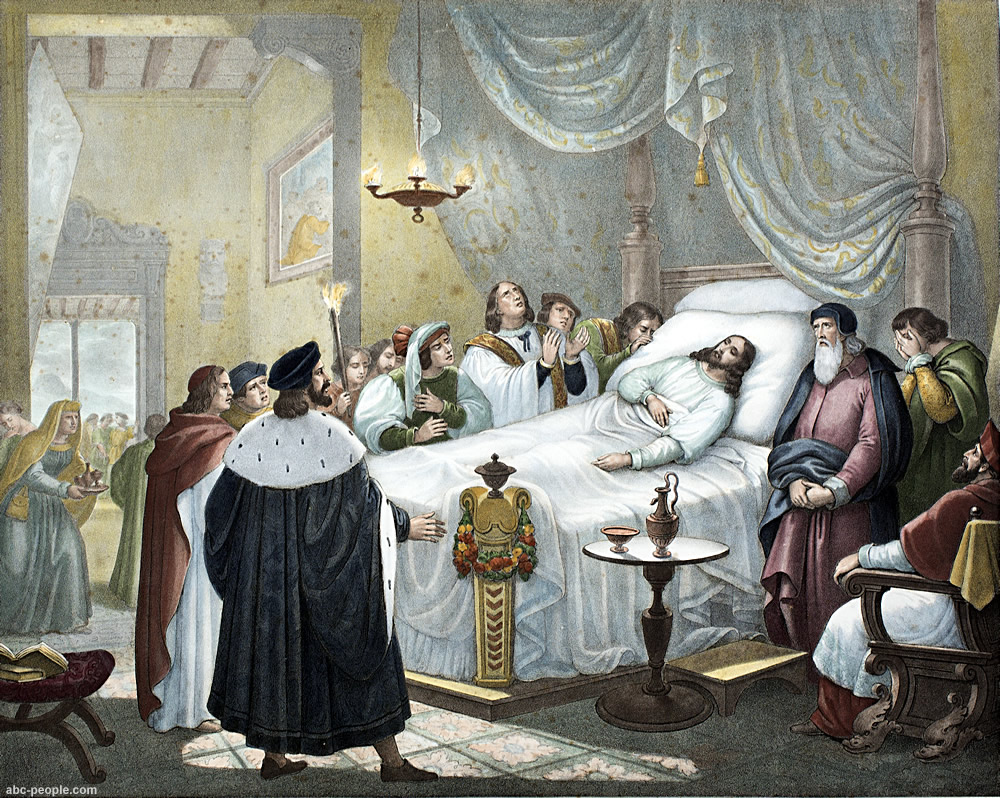| When,
how & why did raphael die |
|
Raphael's
death mystery |
||||||||||||||||
|
Raphael's
Death |
Raphael
killed by too much sex? |
Raphael's
Funeral |
||||||||||||||||
Untimely
Death |
Raphael
died during sex? |
Where
is Raphael buried? |
||||||||||||||||
|
||||||||||||||||||
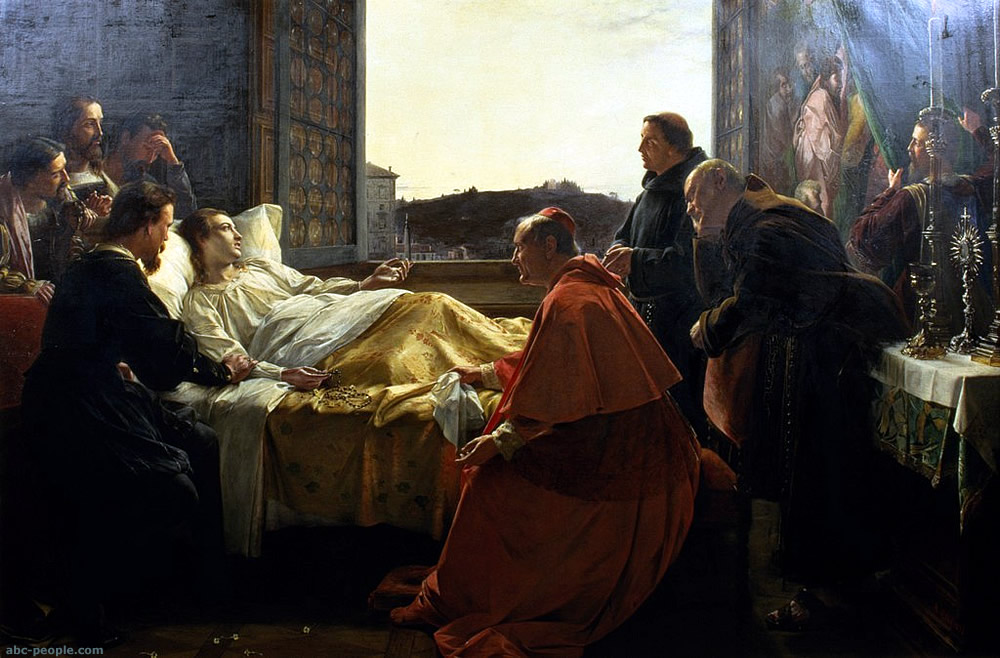
|
| Henry
Nelson O'Neil |
Raphael's
death Whatever the cause, in his acute illness, which lasted fifteen days, Raphael was composed enough to receive the last rites, and to put his affairs in order. He dictated his will, in which he left sufficient funds for his mistress's care, entrusted to his loyal servant Baviera, and left most of his studio contents to Giulio Romano and Penni. At his request, Raphael was buried in the Pantheon. His
funeral was extremely grand, attended by large crowds. The inscription
in his marble sarcophagus, an elegiac distich written by Pietro
Bembo, reads:
"Here lies that famous Raphael by whom Nature feared
to be conquered
|
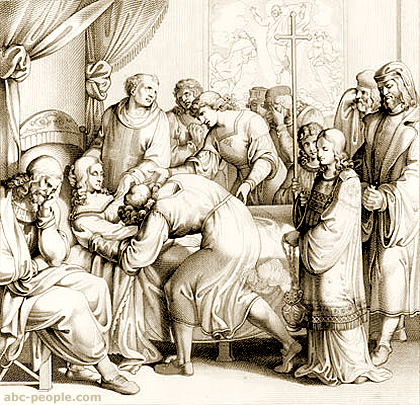
Franz and Christian von Hausen Riepe (Riepenhausen) Raphael's death Engraving, 1816 |
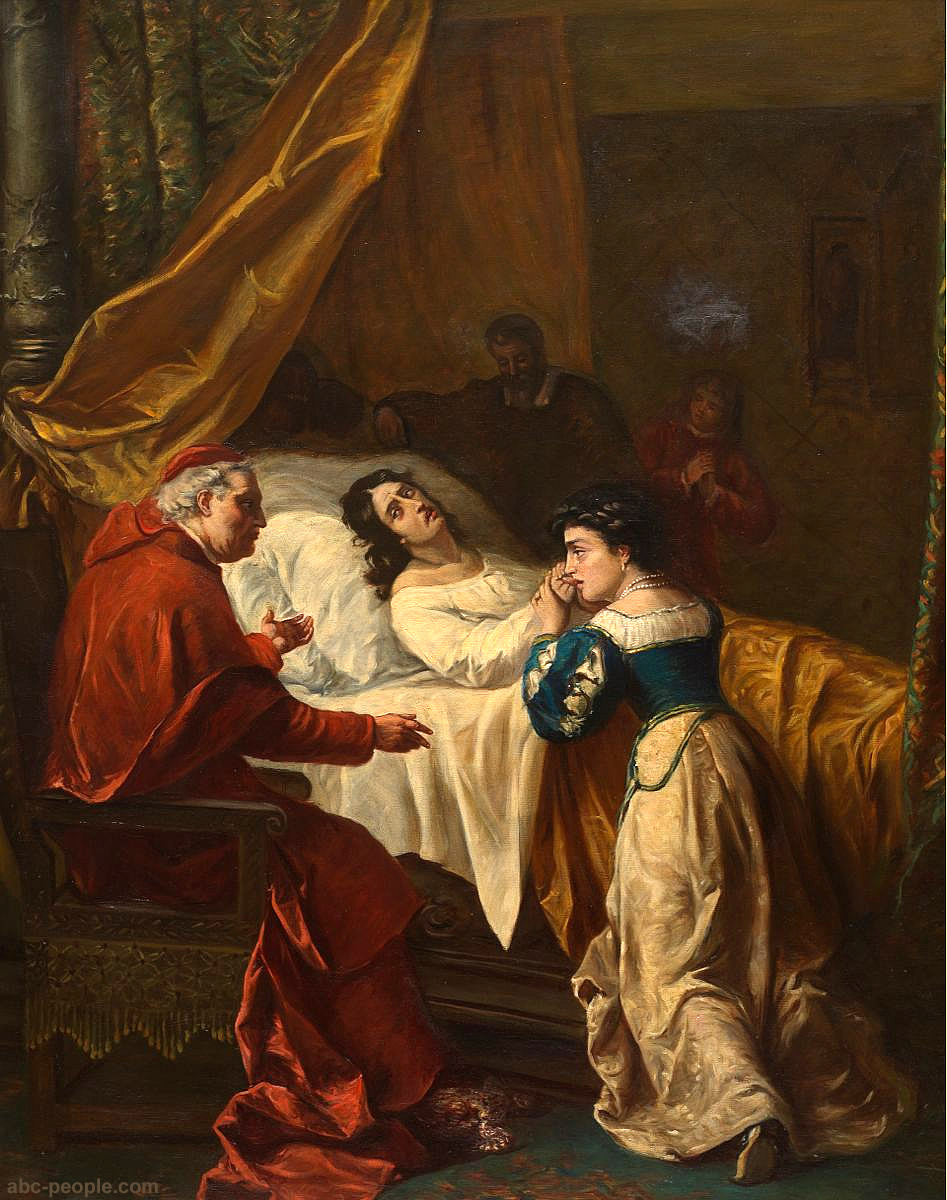
|
|
Painting Inscribed V. Bianchini |
| |
|
|||||
| Can you die of too much sex? That's what happened to the divinely gifted Raphael, according to his 16th-century biographer Giorgio Vasari. Vasari recounts in his book The Lives of the Artists that Raphael, who died aged 37 at the peak of his powers, was brought down by excessive passion. This view of health is medieval: the body is controlled by humours, health depends on a balance of humours, and Raphael's was destabilised by too much action in bed. Well, it's a theory. And yet Vasari goes into detail about Raphael's emotional life. The young, gifted, handsome and courtly artist, he claims, was so enamoured of his mistress that she had to be allowed to live with him in the Villa Farnesina in Rome (as it's now called) while he was painting its frescoes. No sex, no frescoes. The story of Raphael's sensual relationship with La Fornarina, as Vasari names her, fascinated artists down the centuries. Raphael became an icon of lust. In the Turner exhibition currently at Tate Britain, you can seen Turner's imposing painting of Rome from the Vatican Loggia, with Raphael and La Fornarina in the foreground (Raphael is showing off his latest paintings while her jewellery is scattered on the parapet). Raphael was the favourite painter of the popes. That such a perfect church painter was, in fact, making love to his mistress in the Vatican was an idea that titillated Turner – and it titillated Picasso even more. Near the end of his life, Picasso created a series of pornographic etchings that depict Raphael and La Fornarina making love, with Michelangelo hiding under the bed. The
legend of lustful Raphael, it seems, has entranced artists. But
is there any truth in it? Well, before dismissing it as a salacious
tale, you have to look at Raphael's portrait of a naked woman –
is she La Fornarina? – in the Barberini Palace in Rome. She
stands displaying her beauty, in a pose at once classical and intimate.
She wears an armband proclaiming her as his. It's a pretty unambiguous
declaration of desire – not a remote ideal nude, but the artist's
own lover. Surely sex didn't kill Raphael. But it does help his
art live on. |
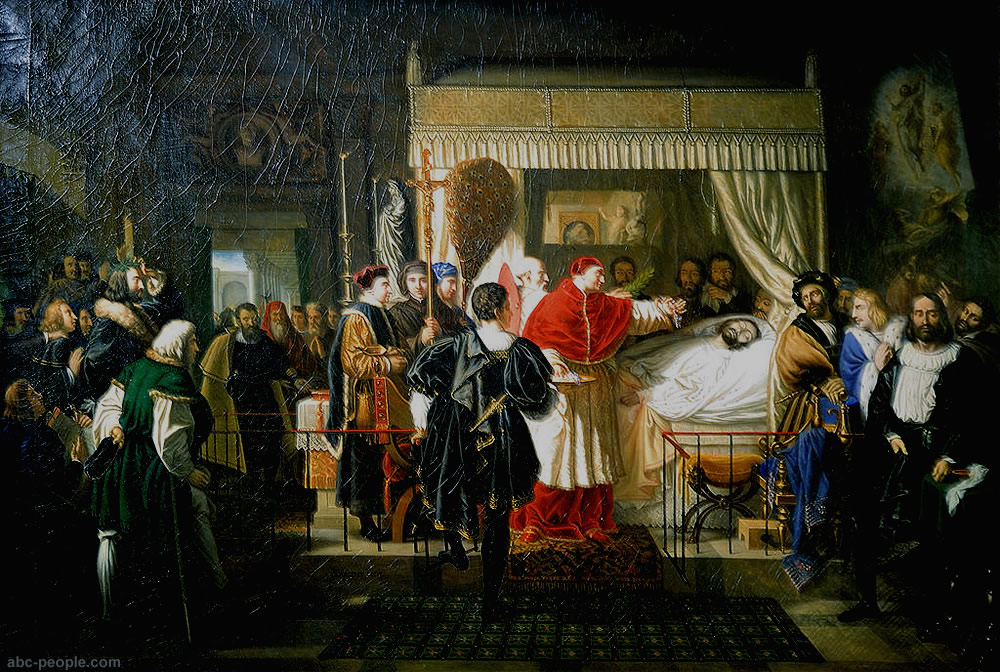
|
| Pierre
Nolasque Bergeret
This
homage to the great Italian painter Raphael is part of a late
18th- to early 19th-century tradition of depicting the deaths
of historical figures. |
Raphael
died during sex? Version
1 (Myth)
Version 2
(another myth) Why
and how did Raphael Santi die?
|
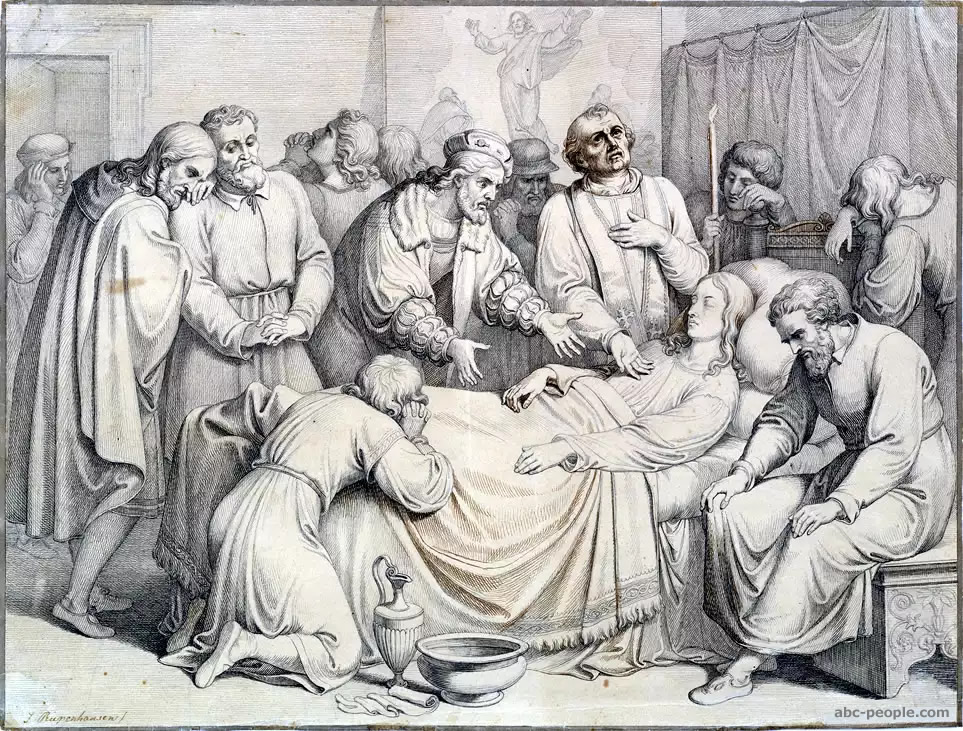
|
| Johannes
Riepenhausen |
Untimely
Death. How old was Raphael, when he died? |
|
|
| Felice
Schiavoni The
people depicted in this painting include (19 characters):
|
| In
1839, the granduke Alessandro Romanov, future Alessandro II tsar of
Russia, commissioned the painter Felice Schiavoni, who was born in
Trieste but had been working in Venice, to execute an enormous painting
depicting the participants of the funeral for Raphael. After 20 years
of work, in 1859, the painting measuring about 8 square meters was
sent to Saint Petersburg to be placed in the summer residence of the
court in the town of Pushkin, in which the painting can still be admired.
From: Renaissance Revisited |
| |
|
|
| Engraving
by R. Bong in "The Iberian Illustration" Pope
Leo X (1513-1521), named Giovanni de Medici |
| When
I view my original 19th century print of “Pope Leo X Taking
His Last Farewell of Raphael,” I see the lifeless, clothed corpse of Raphael which was meant to be temporal, and the Divinely noble spirit of beauty which was meant to be timeless; to which even the Pope bowed, and the untattooed statues in the background testified Needless to say, had Raphael been tainted by even a vestige of Hans Kung, his work would have remained sub-standard. Stephen Michael Volk, Living Water |
|
|
|
|
| Carl
Thiel (1835–1900) |
|
|
|||
| Niccola
Ulacacci (1805 - 1888) |
|||
|
| |
| The
Death and Funeral of Raphael Raphael's premature death on Good Friday (April 6, 1520), which was possibly his 37th birthday, was due to unclear causes, with several possibilities raised by historians. Vasari also says that Raphael had also been born on a Good Friday, which in 1483 fell on March 28. Whatever the cause, in his acute illness, which lasted fifteen days, Raphael was composed enough to confess his sins, receive the last rites, and to put his affairs in order. He dictated his will, in which he left sufficient funds for his mistress's care, entrusted to his loyal servant Baviera, and left most of his studio contents to Giulio Romano and Penni. |
||
| |
||
| Raphael died on his thirty-seventh birthday April 6,1520 at the peak his career. A hard worker all his life, he had given his best to an increasing number of projects and patrons. Yet Raphael also enjoyed the pleasures of life. According to Vasari, after one all-night party, the artist returned home with a mysterious fever. He lay ill fifteen days, during which time doctors bled him, according to medical treatment of that time, "until he grew faint.” Raphael dictated his last will and testament, in which he provided for his beloved mistress Margherita, and bequeathed his studio with all its art materials to his assistants. At the time of his death, Raphael’s fortune was estimated to be 16,000 ducats. | ||
|
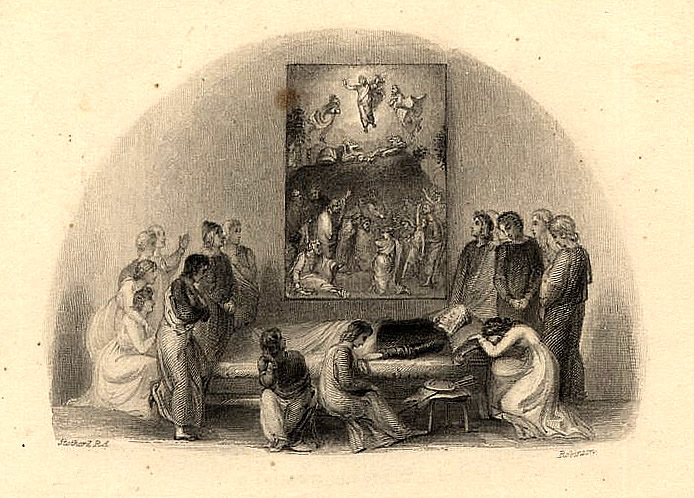 |
The
Death
The death of Raphael |
|
| Copyright
© 2004 abc-people.com Design and conception BeStudio © 2014-2023 |








